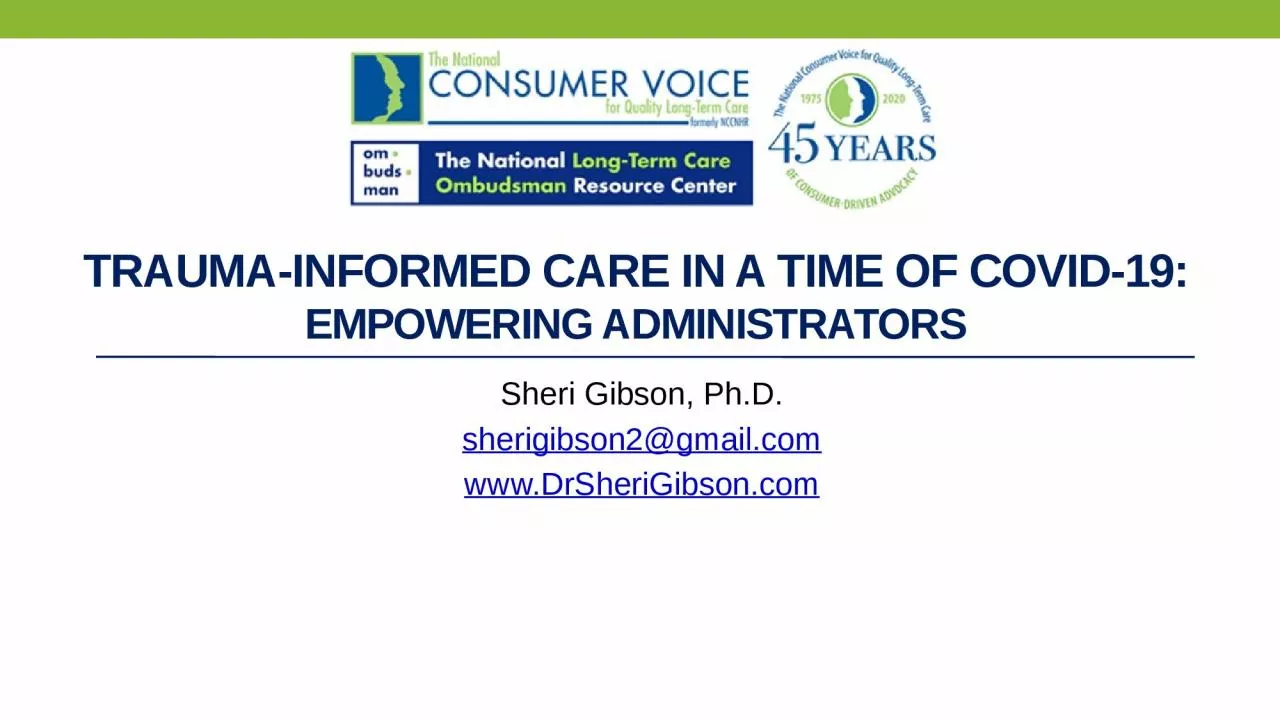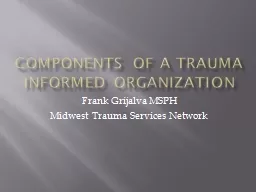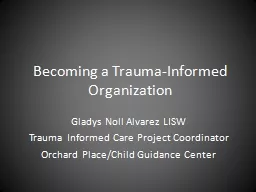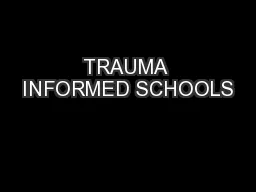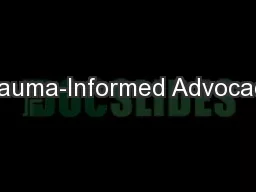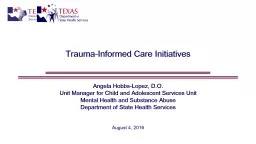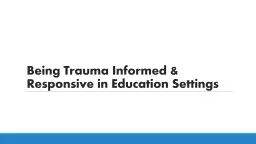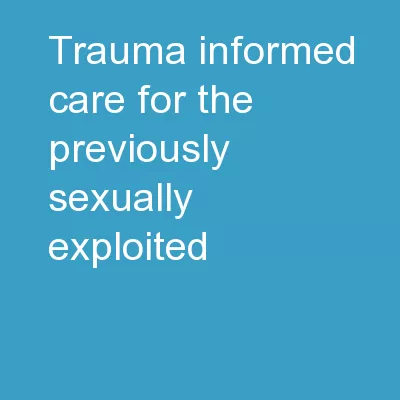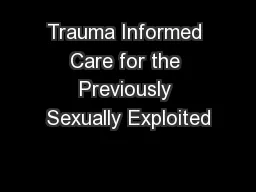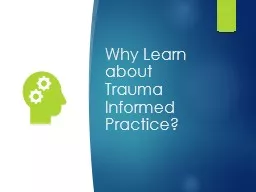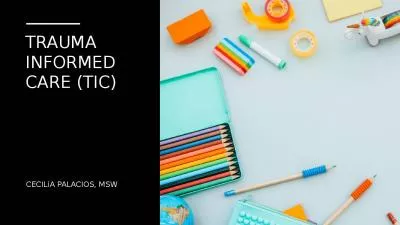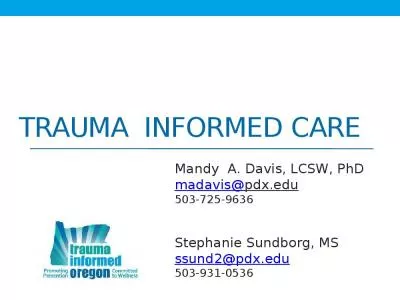PPT-Trauma-informed care in a time of covid-19:
Author : SugarPlumFairy | Published Date : 2022-07-28
empowering administrators Sheri Gibson PhD sherigibson2gmailcom wwwDrSheriGibsoncom A Shattered World One size does not fit all Individual Responses are Multifaceted
Presentation Embed Code
Download Presentation
Download Presentation The PPT/PDF document "Trauma-informed care in a time of covid-..." is the property of its rightful owner. Permission is granted to download and print the materials on this website for personal, non-commercial use only, and to display it on your personal computer provided you do not modify the materials and that you retain all copyright notices contained in the materials. By downloading content from our website, you accept the terms of this agreement.
Trauma-informed care in a time of covid-19:: Transcript
Download Rules Of Document
"Trauma-informed care in a time of covid-19:"The content belongs to its owner. You may download and print it for personal use, without modification, and keep all copyright notices. By downloading, you agree to these terms.
Related Documents

